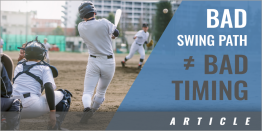|
An unfortunate practice has been going on for far too long in sports. I am referring to the almost reflexive response of parents placing their athlete in a level above the normal age group simply because the child seems to have some above average talent for the sport and so far has been enjoying competing in it. The most common reason for leveling up a player is the assumption that playing against older players will result in more improvement for a child in the long run. Well, just like so many other issues in sports and in life, this issue needs to be given much more careful thought before such a hugely consequential decision is made. Many parents erroneously believe that if the decision to level up is a bad one, they will just put the player back in the age-group level the following year. This highlights what should be the most important consideration - what does the player want? The decision to level up the player may be such a disaster the player may lose their love for the sport and may not want to play it at a competitive level or at all next year. At this time, the player's highest priority may be to simply have fun with their friends from school and they are not ready for the next level because of the intensity and commitment that will accompany it. If the change will necessitate more travel and practice commitment, this may greatly impact other areas in the player's life such as the priority of being a good student. Players are student- athletes and the student comes first. The travel and other commitments may also put financial and practical burdens on family dynamics which can have very real consequences for other children in the family and put a serious strain on a marriage. Playing with older players does not always result in a player's improvement. Playing with the usual age group may allow the player to develop personal skills, e.g., leadership, and may increase self-esteem from good results in every game that would not happen at another level. A player must also be physically, mentally and emotionally ready for tougher competition. Many players who have some of the physical skills to play at a higher level are in no way ready mentally and emotionally for it. The lectures from the parents about a growth mindset when things go poorly do not help. The players typically just become very frustrated and are disciplinary problems for the team, the family and at school. From a purely sport perspective, the most important factor, in my opinion, is the quality of the coaching. The other level, team or league may have older players, but that does not always come with better coaching. Do not confuse winning with good coaching. Do not confuse high batting averages or low ERA's with good skills. All of those things are dependent on how high the standards are, the level of the competition and how hard the players have to work. In most states, there are many choices for a youth player to participate. In baseball, for example, these options include Little League, Junior Baseball, Cal Ripken, Babe Ruth and, of course, Club Ball. These choices, in most instances, greatly dilute the quality of the players and the play. Parents assume that these "higher level" teams are elite, and yet, many teams win tournament trophies every weekend and the players have high batting averages simply as a result of competing against marginal competition. A $300.00 aluminum bat and mediocre pitching can disguise a lot of mechanical flaws. Many times parents have been seduced by talking to their friends about the "fun" of Travel Ball and winning fancy medals and trophies by playing tournaments all around the state or country. First and foremost, Travel/Club Ball programs are businesses who want money for their teams, clinics and camps. And "fun" for whom? Are the parents providing for, or living through, their child? I have seen many Club Ball coaches who played college and professional baseball who knew how to play the game well, but did not know how to teach it, and what they did teach, mechanically, was just wrong. A better option for the player personally, and for the family, may be to keep the player at their usual age group and, if the player is ready for a higher level of training, to hire a qualified personal trainer for athleticism and sport skill training 3-4 times per week for 2-3 months in the off season and once per week during the season. Leveling up may be appropriate if: 1) the player's skills are truly exceptional; 2) the student-athlete is ready physically, mentally and emotionally; 3) if the quality of the coaching, players and competition are high; 4) if the family dynamics will not be negatively impacted. The issue, however, has many layers all of which should be carefully considered and discussed before the decision is made.
Adam Sarancik is the author of three Amazon Top 100 Best Selling books:
|







